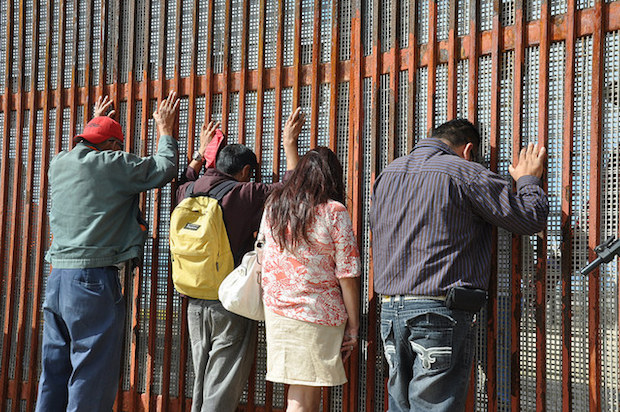
The U.S.–Mexico border to be the location of an annual legal flow of economic trade of $300 billion each year, the frontier of 100 years of peaceful coexistence between two countries, and the point of integration for the U.S.–Mexico relationship. Image: BBC World Service (Flickr CC BY-NC 2.0)
The US-Mexican border region is home to approximately 12 million people, and is the most-crossed international border in the world. Unlike the current physical border, the image people hold of “the border” is not firmly established, and can be modified. One way is via narratives (or stories), which are a powerful tool for gaining support for public policies. Politicians’ narratives about the border have historically been perpetuated by the traditional media, particularly when this allows them to publish sensational and attention grabbing news stories. However, new social media, including YouTube, provide opportunities for less-mainstream narratives of cooperation. In their Policy & Internet article “Do New Media Support New Policy Narratives? The Social Construction of the U.S.–Mexico Border on YouTube”, Donna L. Lybecker, Mark K. McBeth, Maria A. Husmann, and Nicholas Pelikan find that YouTube videos about the U.S.–Mexico border focus (perhaps unsurprisingly) on mainstream, divisive issues such as security and violence, immigration, and drugs. However, the videos appear to construct more favourable perspectives of the border region than traditional media, with around half constructing a sympathetic view of the border, and the people associated with it. The common perceptions of the border generally take two distinct forms. One holds the U.S.–Mexico border to be the location of an annual legal flow of economic trade of $300 billion each year, a line which millions of people legally cross annually, the frontier of 100 years of peaceful coexistence between two countries, and the point of integration for the U.S.–Mexico relationship. An alternative perspective (particularly common since 9/11) focuses less on economic trade and legal crossing and more on undocumented immigration, violence and drug wars, and a U.S.-centric view of “us versus them”. In order to garner public support for their “solutions” to these issues, politicians often define the border using one of these perspectives. Acceptance of the first view might well allow policymakers to find cooperative solutions to joint problems. Acceptance of…
